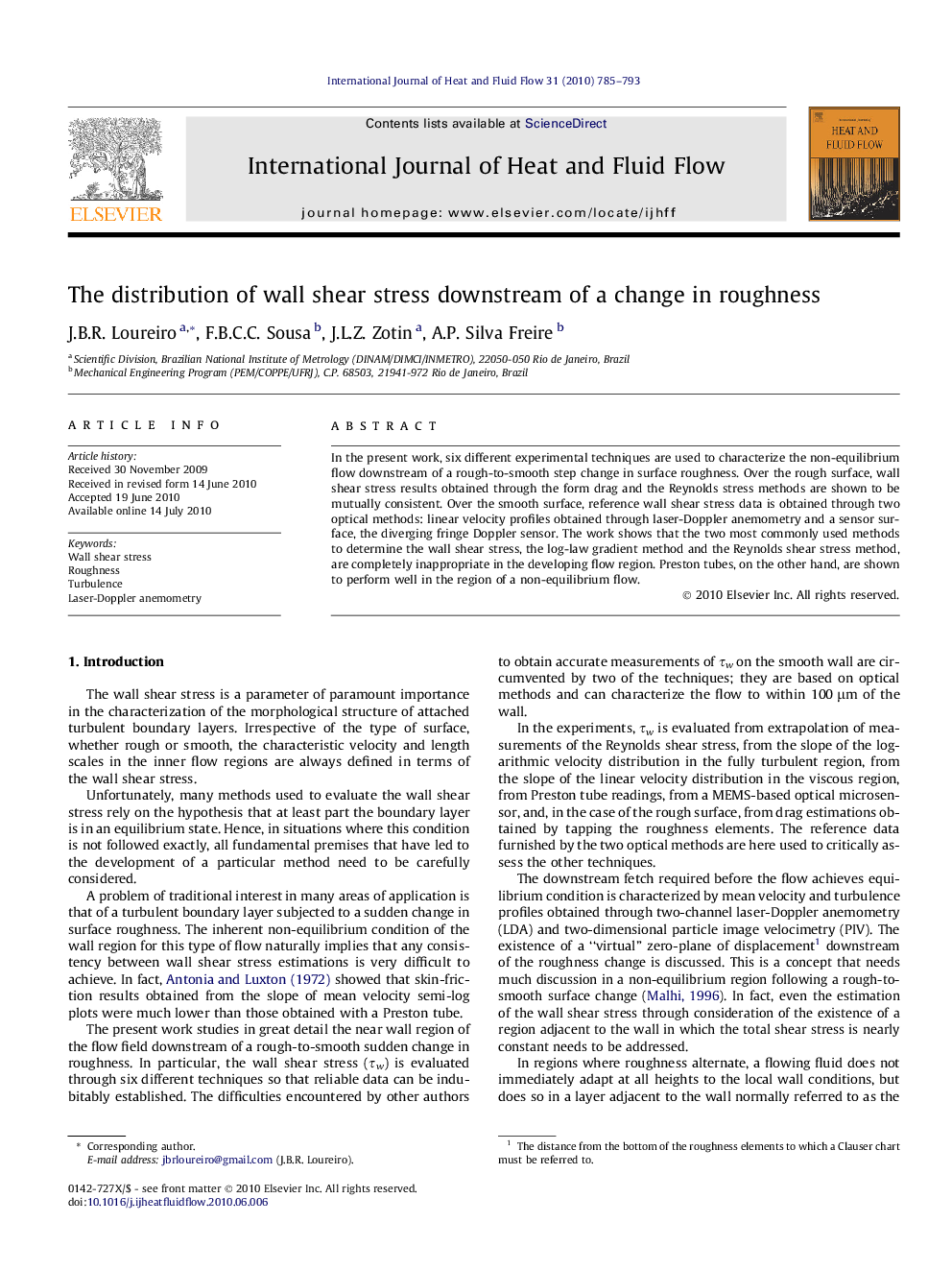| Article ID | Journal | Published Year | Pages | File Type |
|---|---|---|---|---|
| 655747 | International Journal of Heat and Fluid Flow | 2010 | 9 Pages |
Abstract
In the present work, six different experimental techniques are used to characterize the non-equilibrium flow downstream of a rough-to-smooth step change in surface roughness. Over the rough surface, wall shear stress results obtained through the form drag and the Reynolds stress methods are shown to be mutually consistent. Over the smooth surface, reference wall shear stress data is obtained through two optical methods: linear velocity profiles obtained through laser-Doppler anemometry and a sensor surface, the diverging fringe Doppler sensor. The work shows that the two most commonly used methods to determine the wall shear stress, the log-law gradient method and the Reynolds shear stress method, are completely inappropriate in the developing flow region. Preston tubes, on the other hand, are shown to perform well in the region of a non-equilibrium flow.
Related Topics
Physical Sciences and Engineering
Chemical Engineering
Fluid Flow and Transfer Processes
Authors
J.B.R. Loureiro, F.B.C.C. Sousa, J.L.Z. Zotin, A.P. Silva Freire,
